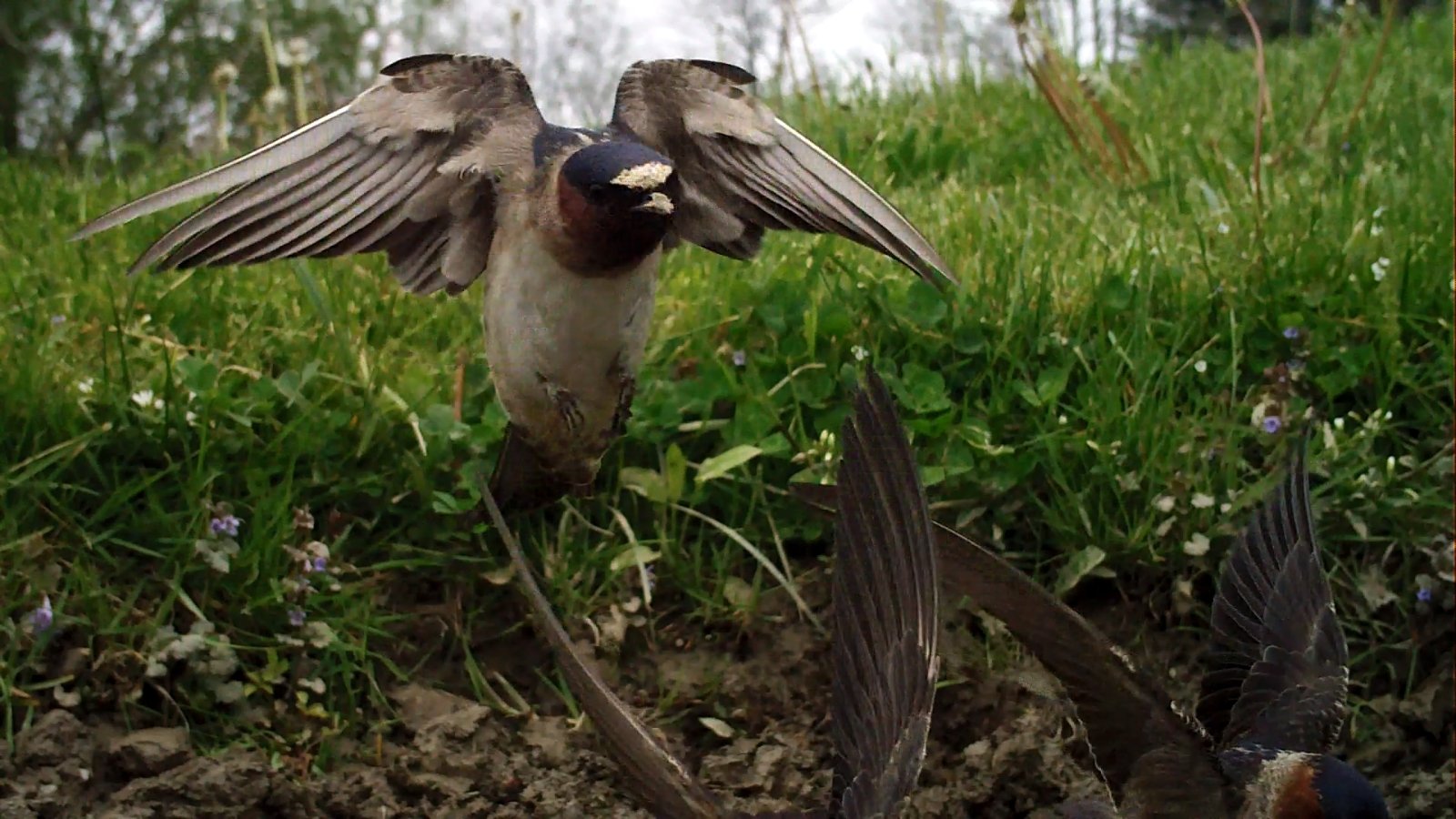
Donate to Swallow Conservation
Swallow Conservation is a small nonprofit organization that operates strictly on grants and donations. All donations go directly to conserving swallows—donations make it possible for us to continue to try to understand reasons why swallows are declining in northeastern North America, to discover ways we can help them while they are here for a few short months to breed, and to share this information with landowners/managers and conservation organizations/agencies.
Frequently Asked Questions
-
Cliff Swallows are steely blue above and cream below, with a deep rufous neck, a pale orange rump spot, and a white forehead patch. They construct bottle-shaped mud nests on cliffs, under eaves, and in culverts and under bridges. In the eastern U.S., they are most often found nesting under eaves. Bank Swallows are smaller than Cliff Swallows with brown above and cream below and a brown band across the chest. They commonly nest near water in river or stream banks but also nest in human-made road cuts and sand pits, where excavate nest burrows in a vertical earthen banks. Both Cliff and Bank Swallows are highly colonial, nesting in groups.
-
Cliff Swallows require open areas for foraging, wet/muddy areas to collect mud for nest-building, and, in the northeast, the eaves of a building or other structure on which to attach their bottle-shaped nests. They are often found nesting in agricultural settings in the northeast. Cliff Swallows do not nest in forested or urban areas.
-
Barn Swallows require open areas for foraging, wet/muddy areas to collect mud for nest-building, and access to the inside of barns or outbuildings where they often place their nests against or on beams, or on other surfaces. They also will nest under docks and on porches or similar structures. They are often found nesting in agricultural settings in the northeast. Barn Swallows do not nest in forested or urban areas.
-
Barn Swallows are experiencing population declines in the northeast, likely due to a variety of factors. The factors affecting them negatively at nesting sites include the decline of farming, loss of barns and/or the common practice of excluding Barn Swallows from barns, suburbanization, intensive agriculture, regrowth of forests, and decline of wetland areas to name a few.
-
The nests are made of bisque-fired stoneware clay. They are durable, breathable, nontoxic, and can be cleaned and reused annually.
-
Swallow Conservation produces and sells Cliff and Barn Swallow nests (add link). Before you order nests we will consult with you to make sure that you have the right habitat for swallows and that the nests will work in your particular location/situation. We can custom make nests for different types of locations.
-
Nests are installed with screws and rubber gaskets that come with each nest.
-
Yes, nests are shipped USPS.
-
Barn Swallow chicks fall due to premature fledging (e.g., the chicks were frightened), in response to external parasites, and for other, unknown reasons.
-
In the northeast, it is though that Cliff Swallows nests may fall from eaves due to interference from invasive House Sparrows, lack of adhesion to eaves due to a nonporous (e.g. newly-painted) surface, or construction of nests with poor soil (e.g., sandy), and other, unknown, reasons.
-
See A Review: Alternative Nesting Structures for Barn Swallows.
-
Barn Swallow droppings accumulate under nests only during the nesting period. Barn swallow chicks fledge at around 20 days. At about day 12, chicks will to defecate over the edge of the nest. This is when the most droppings accumulate. A simple solution is to place a few sheets of newspaper or a piece of cardboard under each nest and remove it after the chicks have fledged.





